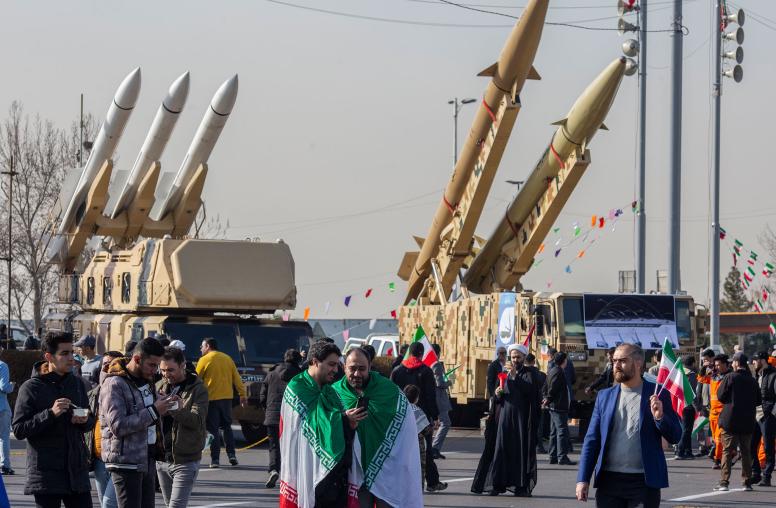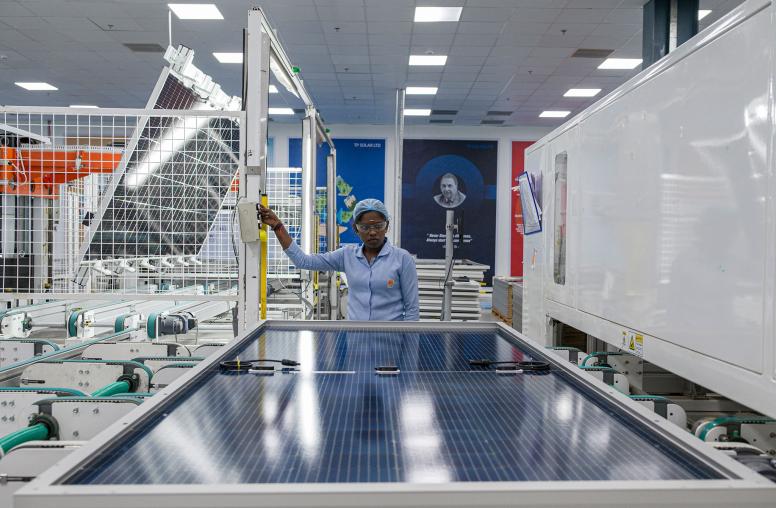Houthi Attacks in the Red Sea Disrupt Global Supply Chains
The absence of architecture to manage shared security priorities across the Red Sea will be a challenge.
Drone and missile attacks by Yemen-based, Iranian-backed Houthi rebels on ships in the Red Sea have disrupted global supply chains. The United States has responded to these attacks by shooting down Houthi drones, and the Biden administration has set up a 10-nation naval task force to protect ships traveling along this important route.

U.S. Defense Secretary Lloyd Austin said Operation Prosperity Guardian will “jointly address security challenges in the southern Red Sea and the Gulf of Aden, with the goal of ensuring freedom of navigation for all countries and bolstering regional security and prosperity.”
The Houthi attacks are the latest fallout from the Israel-Hamas war in the Gaza Strip. The Houthis had initially said they were attacking Israeli and Israel-bound ships in a show of support for Hamas. However, the group’s attacks have targeted a wide variety of merchant tankers. Major firms, meanwhile, have announced that they will halt or reroute shipping to avoid the Red Sea route.
USIP’s Susan Stigant discussed the latest developments in the region.
How significant is the Red Sea to global trade? What impact will the Houthi attacks have on the global supply chain?
Stigant: The Red Sea is a major artery for global trade. About 12% of global trade passes through the Red Sea, which accounts for billions of dollars of goods and about 30% of the world’s container shipping. Access to the Red Sea requires passage through the Bab al Mandab — a narrow strait about 20 miles wide with Djibouti to the west and Yemen to the east.
Several large shipping companies — seven out of the 10 biggest shipping companies, including Maersk, and BP — have made the decision to halt shipping through this corridor. Some companies will use a new route traveling south through the Indian Ocean, around the Cape of Good Hope in South Africa and then up the western coast of Africa. This could add up to two weeks to shipping and add more than $1 million to the transportation costs. Ultimately, the additional time and the additional expenses could raise the prices for fuel and availability of goods.
Do these Houthi attacks increase the probability of the conflict in the Middle East spreading to include other actors, especially now that the United States has announced a multinational naval task force to address the threat posed by the Houthis?
Stigant: The United States has announced a multinational naval taskforce called Operation Prosperity Guardian to patrol the southern part of the Red Sea. The taskforce includes the United Kingdom, Bahrain, Canada, France, Italy, the Netherlands, Norway, Seychelles and Spain. Notably, leading regional powers, including Saudi Arabia and Egypt — but also Djibouti, Somalia, Sudan, Kenya, Ethiopia and Eritrea, appear to be absent. Significantly, the taskforce also excludes China, which has a naval base in Djibouti and which considers the Red Sea as an important bridge in its Belt and Road Initiative. Communications with other countries will be critical to ensure that the increased presence and deployment by the United States and its allies is not perceived as an escalation or threat to security interests and priorities.
This is not the first operation in the Red Sea. In response to the threat from piracy operations off the Horn of Africa, the European Union launched Operation ATALANTA in 2008. The operation continues and may offer some useful reflections on coordination with relevant countries, alignment on strategic approaches and the challenges of addressing nonstate threats that are land-based but operating in a maritime space.
What steps can be taken to avoid a wider conflict?
Stigant: At the moment, all attention appears to be focused from the Red Sea to the east. While this is the direct and immediate threat to shipping, countries in the Horn of Africa and along the western coast will also be watching closely.
From Sudan to Somalia, the Horn of Africa is traversing a time of tremendous turmoil. Sudan’s war has faced a dangerous expansion and escalation over the last week, and there are fears that the Rapid Support Forces may push further east to the Port of Sudan. Ethiopia’s prime minister has been calling publicly for direct access to the Red Sea for his landlocked country. Eritrea, which has the longest coastline along the Red Sea, only recently rejoined the Intergovernmental Authority on Development (IGAD) and has limited lines of communication with Western countries.
USIP’s Senior Study Group on Peace and Security in the Red Sea Arena highlighted the increased engagement by Gulf countries to secure access to ports up and down the Red Sea. Since 2020, there has been further intensification of this interest and even expanded interest from Russia, which sought to reach agreement with the regime of Omar al-Bashir in Sudan and later the civilian government prior to the 2021 coup and 2023 civil war in that country.
The study group also noted the absence of the necessary architecture to manage shared security priorities across the Red Sea. This remains the case today.



